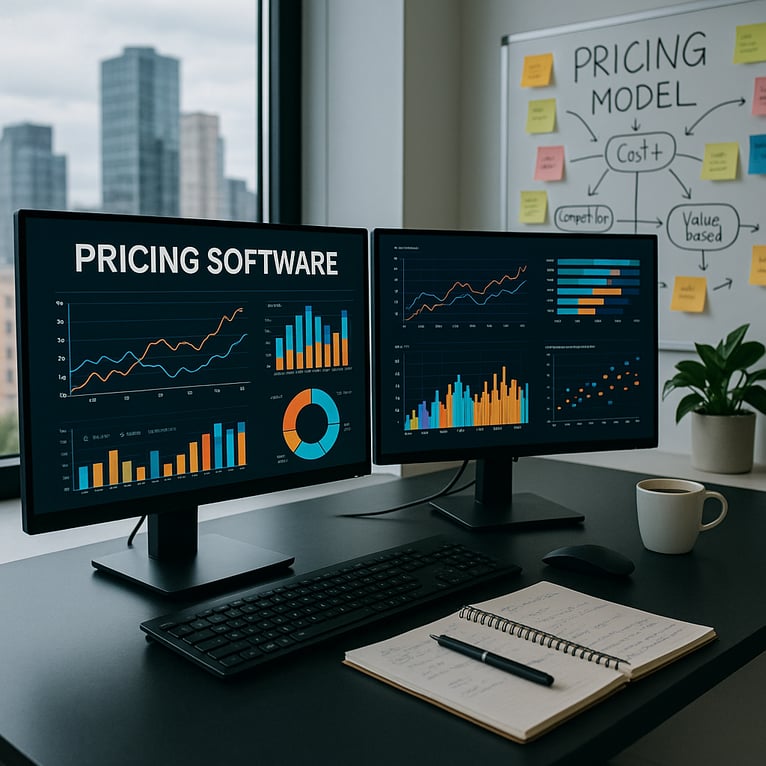With today’s pricing transparency, price has become one of consumers’ key purchase decision factors. Shops navigate a tricky path when it comes to pricing: they don’t want to be undercut by competitors and lose sales, but they also don’t want to get caught in a “race to the bottom” where price cutting gets so extreme that margins completely disappear.
In a race to the bottom, competitors fight fiercely for the customer due to continuous price reductions. To escape this, shops are increasingly using intelligent dynamic pricing software solutions. An often-heard concern is that when all companies in the same industry would use the same dynamic pricing software, wouldn’t that too result in a race to the bottom? Fortunately, this is not the case. Since both the commercial strategy as well as the input variables (e.g. purchase price, inventory) vary per company, there is no reason to end up in a race to the bottom. Intelligent dynamic pricing, instead of very basic dynamic pricing by simply following the lowest price in the market, actually enables stores to avoid the race to the bottom. This blog post outlines four ways how to use intelligent dynamic pricing strategies that can help you avoid a race to to the bottom and protect your margins.
1. Use your commercial strategy
As CEO of Coolblue Pieter Zwart stated during the ING Business Boost: ,,In the end only one thing remains with which you can distinguish yourself online and that is the price. Since I have 60,000 competitors in the Netherlands alone, you understand that this is just a race to the bottom.’’ Despite this challenge, Coolblue drives significant profitable growth. What is their secret? ,,It’s not about the picture, the price or the buy-button. It concerns the entire customer journey. It is not just about the product you offer, but the complete need that you are trying to satisfy with that.’’ A shop’s commercial strategy influences the price because the consumer is generally willing to pay a premium price for extra services such as fast delivery, customer service or the possibility to pay by invoice.
Another important commercial factor that plays a role, is the market position within the specific product category: being the destination store or a specialist/niche store could allow for a bit of a premium price. Analysis by A.T. Kearney shows that retailers with a large market share and high contamination risk could use premium pricing. Price contamination occurs when competitors quickly match a company’s pricing moves and when consumers switch providers as soon as they learn about a lower priced alternative. In many cases the optimal price is therefore not equal to the lowest price in the market.
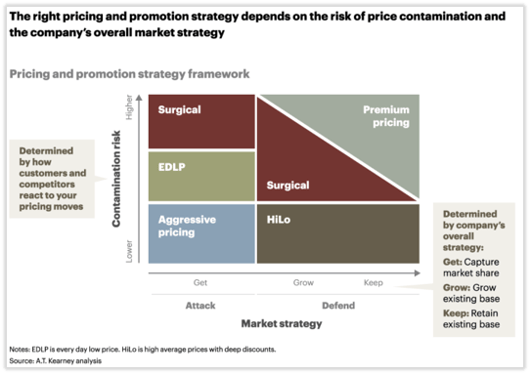
Since the commercial strategy is essential for determining the optimal price, the commercial and pricing strategy should be clearly defined before starting the implementation of dynamic pricing. The company’s overall strategy should translate to pricing tactics per category, based on the roles of categories within the retail format. A store with a broad assortment, may for example want to use aggressive pricing in a new product category to get market share whereas they may use premium pricing in a product category where they already have established significant market share. Dynamic pricing software usually offers complete flexibility to automate the pricing strategy through the creation of pricing business rules. A shop offering a high value proposition with several free services can for example: choose the most frequent price in the market + XX% and set a target margin level per product group or brand (or any other level), making sure profits will be dynamically protected to competitor’s price reductions.
2. Use price elasticity
The price elasticity of demand measures the responsiveness of quantity demanded to changes in the price of the product. Elasticity per product(group) provides insights in how competitive the pricing needs to be. For example a TV is usually high elastic, whereas demand for a wall mount is less sensitive to price changes. In practice, it means that increasing the price for the TV by 10% results in a significant decrease of volume while increasing the price for the wall mount by 10% may negligible affect volume and therefore the right thing to do. Typically non-elastic products are ‘add-on’ products for which consumers generally do not compare prices or products with a low absolute price point, for which doing pricing research isn’t worth the time for shoppers. For those products there is less need to follow the lowest price in the market.
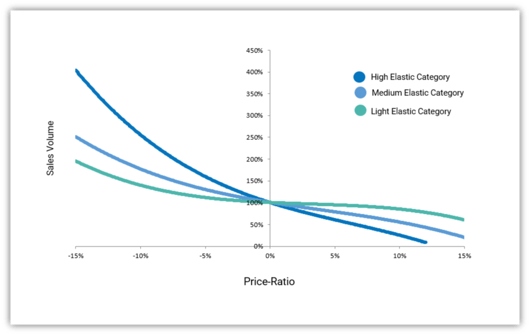
3. Use your stock levels
Next to price elasticity, inventory levels are another important variable to make better pricing decisions in order to optimize profits. Early adopters of dynamic pricing, such as the airline industry, are characterized by having a fixed short-term capacity and relatively low variable costs. In such settings, it is the available capacity, for example, the number of seats still available on a flight, that causes prices to change throughout time. For several other industries using capacity or stock levels based on business rules in pricing, it also helps to optimize supply and demand and to avoid obsolete inventory. Usually a shop would reduce the price by a significant percentage after a product has become obsolete. Business rules based on stock levels could help to protect a store’s margin in case a competitor decreases its price because of obsolete inventory. If your inventory for this product is below your set limit of stock weeks or months (#units in stock divided by #units sold last 4 weeks), there’s no need to adjust the price and give away margin. The example underneath shows that if your stock coverage is less than 4 weeks and your stock age (# days in inventory) is less than 30 days the minimum margin should be 20%. One could also use the most occurring price point.
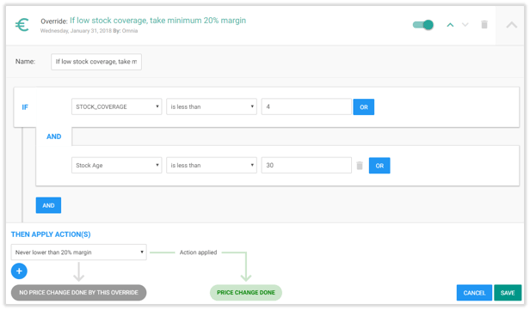
Business rules on stock levels could also help to optimize profits for your own stock levels. Instead of static and reactive price reductions, business rules based on stock coverage dynamically adjust prices to stock levels. You may for example need to reduce your price by only a few percent to take the first price position on Google Shopping, instead of the static X% on the complete obsolete assortment. Proactively managing your stock levels could lead to a significant increase in contribution margin. In combination with Pricewatch, Omnia offers the unique opportunity to incorporate pricing data in the bid calculation. If you already have the first price position in Google Shopping, it may be more interesting to increase bids instead of further reducing the price.
4. Use a high-runner strategy
Amazon uses a clever strategy that makes it seem like it undercuts its competition more often than it does. It offers its biggest discounts on its most popular products, while making profits on less popular ones. In Omnia you could implement this by using a high-runner strategy. You can choose a variable to select high runners: number of views, quantity sold or anything else.
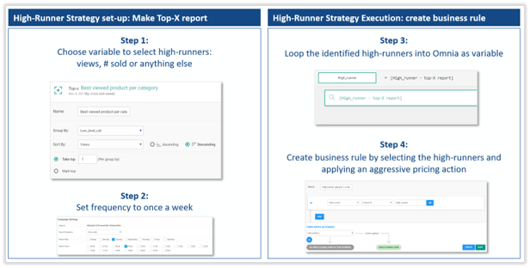
Consistently low prices on the highest viewed and best-selling items drives a perception among customers that you have the best prices, taking advantage of the psychology of price perception. Another advantage is that you attract a lot of customers to your website because of these popular and competitively priced products, which provides the opportunity to cross or up sell other products with better profit margins.
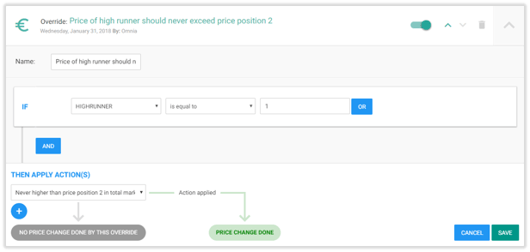
Closing remarks
These are only a few examples of how Omnia’s dynamic pricing software could help to avoid a race to the bottom. More information about Omnia? Don't hesitate to get in touch, or give us a call at +31 (0) 85 04 79 240.
Talk to one of our consultants about dynamic pricing.

Curious to learn about other pricing strategies or interested in our Amazon guide series? Check out some of our other articles below:
- What is Value Based Pricing?: A full overview of how price and consumer perception work together.
- What is Charm Pricing?: A short introduction to a fun pricing method.
- What is Penetration Pricing?: A guide on how to get noticed when first entering a new market.
- What is Odd Even Pricing?: An explanation of the psychology behind different numbers in a price.
- What is Bundle Pricing?: Learn more about the benefits of a bundle pricing strategy.
- What is Cost Plus Pricing?: In this article, we’ll cover cost-plus pricing and show you when it makes sense to use this strategy.
- What is Price Skimming?: Learn how price skimming can help you facilitate a higher return on early investments.
- What is Map Pricing?: Find out why MAP pricing is so important to many retailers.
- Here’s What You Need to Know About Psychological Pricing (Plus 3 Strategies to Help You Succeed): Modern day pricing is so much more than a numbers game. When thought about correctly, it’s a powerful way to build your brand and drive more profits.
- How to Build a Pricing Strategy: A complete guide on how to build a pricing strategy from Omnia partner Johan Maessen, owner of Commercieel Verbeteren.
- The Strategies Behind Amazon's Success: Learn how Amazon became 'the place' to buy products online.
- The Complete Guide To Selling on Amazon: In this guide we answer some of the top questions we hear about Amazon and give helpful hints on how to succeed on the platform.
- How Does Amazon's Search Algorithm Work: Find out how Amazon connects their shoppers with relevant products as quickly as possible.
- Price, The Most Important P in the Marketing Mix: In this article we'll look at the relevance of the 7 P’s in today’s online marketing context.



.png?height=766&name=Untitled%20design%20(21).png)
